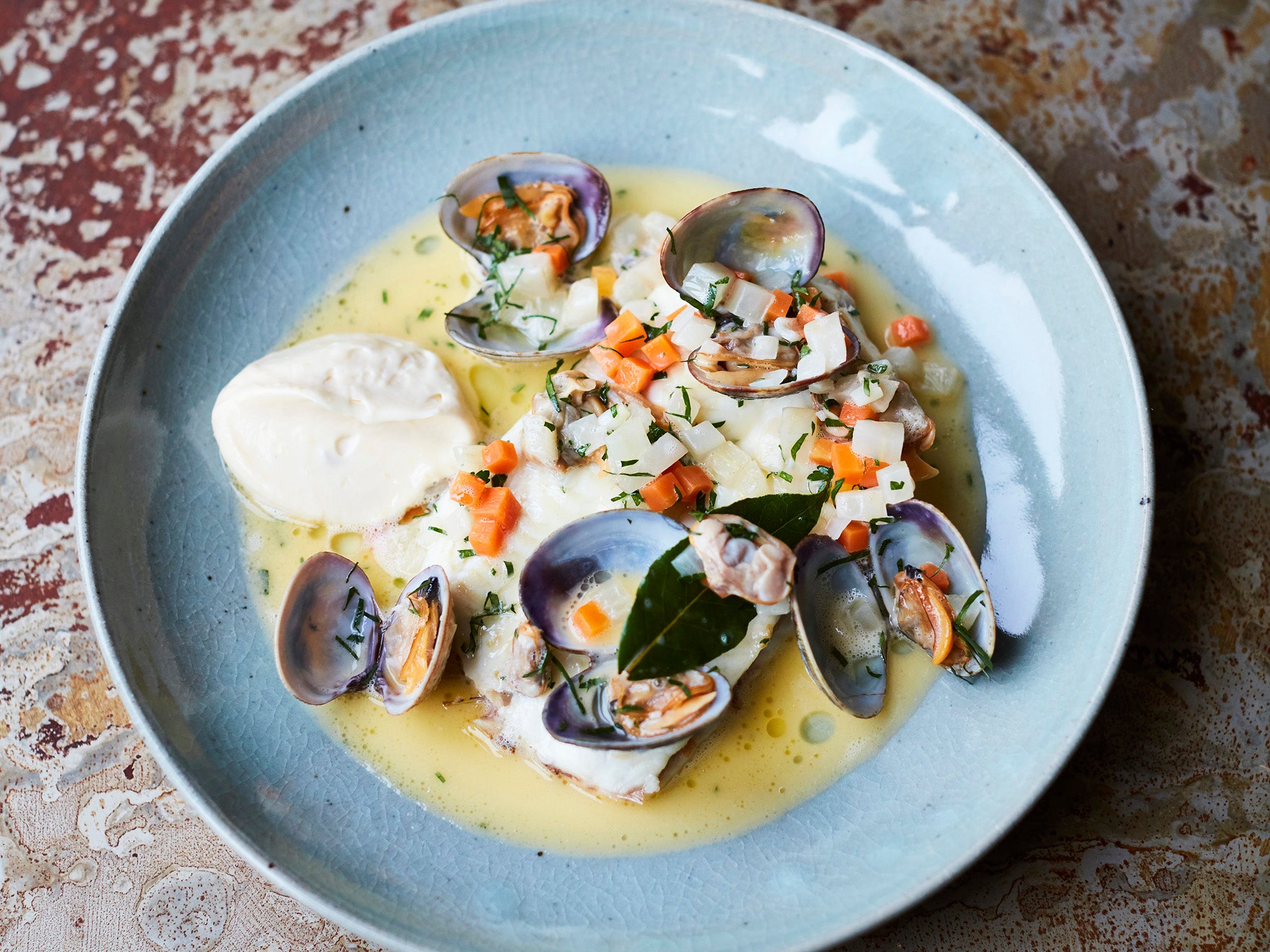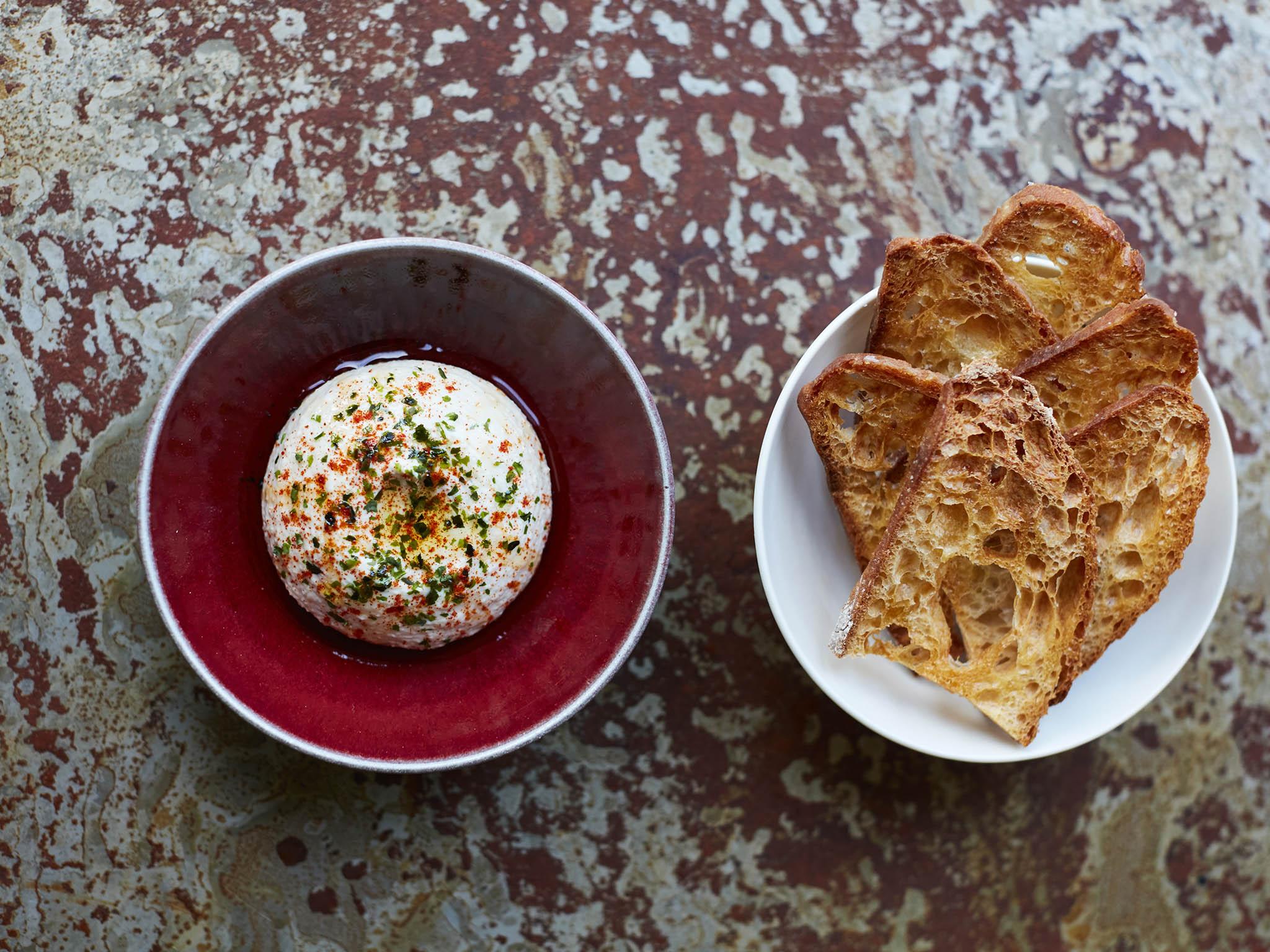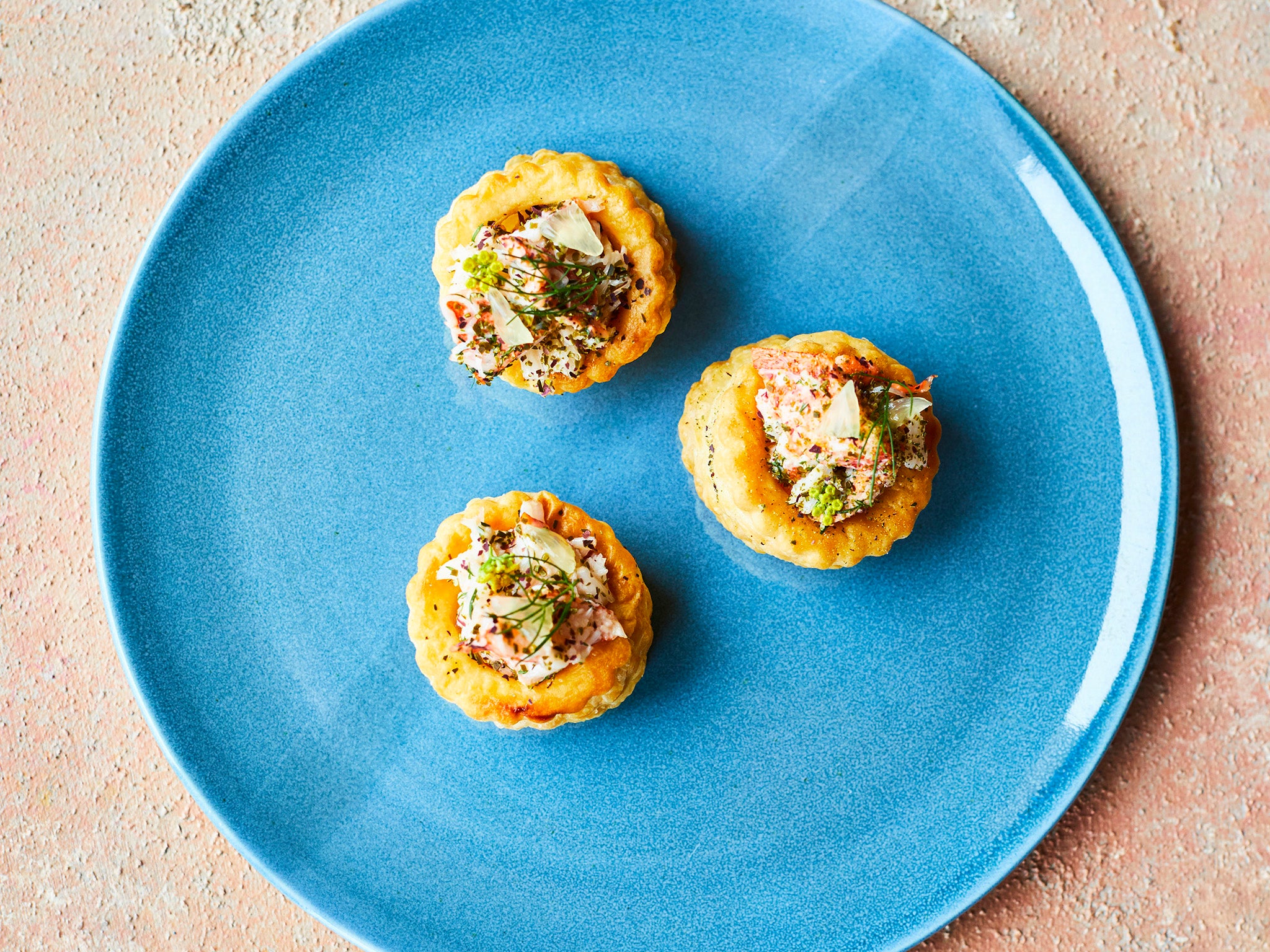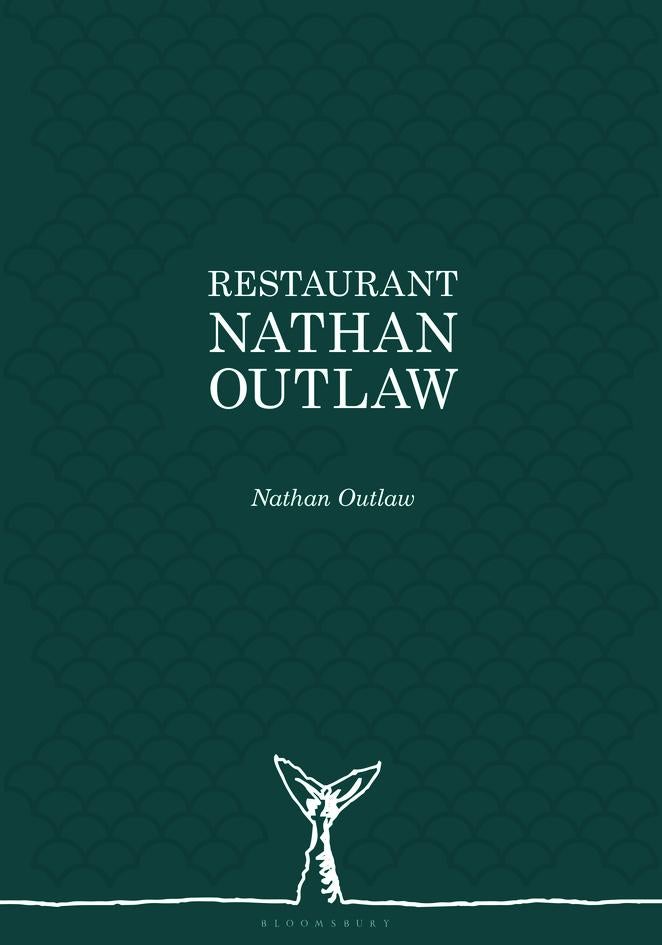‘Restaurant Nathan Outlaw’ cookbook: Recipes from Dover sole clams to lobster vol au vents
The Cornish chef takes us on a seafood voyage with recipes from his new book

Your support helps us to tell the story
From reproductive rights to climate change to Big Tech, The Independent is on the ground when the story is developing. Whether it's investigating the financials of Elon Musk's pro-Trump PAC or producing our latest documentary, 'The A Word', which shines a light on the American women fighting for reproductive rights, we know how important it is to parse out the facts from the messaging.
At such a critical moment in US history, we need reporters on the ground. Your donation allows us to keep sending journalists to speak to both sides of the story.
The Independent is trusted by Americans across the entire political spectrum. And unlike many other quality news outlets, we choose not to lock Americans out of our reporting and analysis with paywalls. We believe quality journalism should be available to everyone, paid for by those who can afford it.
Your support makes all the difference.Dover sole with clams, parsley and garlic
For me, the best way to cook and serve Dover sole is on the bone. Owing to its structural nature and tightly packed, almost meaty flesh, this fish needs to age a little before it is cooked. To experience its true flavour and wonderful texture, I think a Dover sole needs to be three days old when you cook it. The classic flavour combination of clams, parsley and garlic is the perfect complement. Take the Dover sole out of the fridge to bring them to room temperature before cooking.
Serves 4
4 Dover sole, 300–400g each, skinned, trimmed and heads removed
olive oil for cooking
Cornish sea salt and freshly ground black pepper
For the clams and sauce
400g live Palourde clams, well washed
olive oil for cooking
1 banana shallot, peeled and finely chopped
1 fennel bulb, outer layer removed, finely diced
1 large carrot, peeled and finely diced
2 garlic cloves, peeled and finely chopped
2 bay leaves
200ml white wine
50ml double cream
200g cold unsalted butter, diced
2 tablespoons curly parsley, picked and chopped
2 tablespoons flat-leaf parsley, picked and chopped
a few drops of lemon juice (optional)
For the roasted garlic aïoli
1 garlic bulb
400ml olive oil, plus a drizzle
2 large egg yolks
finely grated zest and juice of 1 lemon
To prepare the roasted garlic aïoli
Preheat your oven to 220°C/Fan 200°C/Gas Mark 7. Wrap the garlic bulb in a piece of foil with some salt and a drizzle of olive oil. Place in an oven dish and bake for 1 hour until soft. Unwrap the garlic and leave until cool enough to handle, then separate the cloves and squeeze out the soft garlic pulp.
Put the egg yolks, lemon zest and juice and the roasted garlic pulp into a blender or food processor. Blitz briefly to combine, then, with the motor running on a low speed, add the olive oil through the funnel in a thin, steady stream until it is all incorporated and the aïoli is thick.
Season with salt and pepper to taste and blend for 30 seconds. Transfer to a container, cover and refrigerate until ready to serve.
To prepare the clams and sauce
Place a large pan (that has a tightfitting lid) over a medium-high heat. When it is hot, add a good drizzle of olive oil, then the shallot, fennel and carrot. Sweat for 2 minutes without colouring. Add the garlic and bay leaves and cook for another minute. Now add the clams and wine and put the lid on the pan. Cook for 2–3 minutes until the clam shells open. Tip the clams, along with the vegetables, into a colander set over a bowl to catch the juices.
Wipe out the pan and put it back on the heat. Tip the collected wine and clam juices back into the pan and simmer to reduce by half then add the cream. Now lower the heat and gradually whisk in the cold diced butter. The butter will emulsify into the juices to make the sauce base. When it is all incorporated, set the sauce aside; keep warm. If you prefer, you can remove the clams from their shells. Either way, discard any that haven’t opened. Set aside while you cook the fish. To cook the Dover sole Oil a large, shallow roasting tray (big enough to hold all 4 fish) and sprinkle with salt. Season the fish well with salt and lay on the tray (with the side the dark skin has been removed from uppermost). Oil the fish generously and bake for 10–12 minutes until cooked. Remove from the oven and set aside to rest while you finish the sauce; keep warm.
To assemble and serve
Warm the sauce gently, then add the clams, 3 tablespoons of the reserved vegetables and all of the chopped parsley. Taste the sauce for seasoning and acidity, adding a little salt and/or a few drops of lemon juice if you think it needs it. Carefully lift the fish from the roasting tray onto warmed plates. Share the sauce, vegetables and clams equally among the 4 plates and finish with a good spoonful of aïoli on the side. Serve immediately.

Smoked cod's roe dip with sourdough crisps
This dip is simple to make and so more-ish – my son would eat the whole lot in one go if I turned my back. The key, obviously, is the main ingredient. You want to buy good-quality smoked cod’s roe that isn’t too large and has a good, firm texture.
Serves 10 as a starter or light snack
For the cod’s roe dip
500ml light olive oil
4 garlic cloves (unpeeled)
100g good-quality crustless bread
about 100ml milk
400g smoked cod’s roe, rinsed and membrane removed
40g Dijon mustard
juice of 2 lemons
smoked paprika to sprinkle
mixed dried seaweed to sprinkle
Cornish sea salt and freshly ground black pepper
For the sourdough crisps
½ large sourdough loaf (2 days old)
extra virgin olive oil to drizzle
To make the cod’s roe dip
Heat the olive oil and garlic in a saucepan over a medium heat until the oil starts to bubble around the garlic cloves. Turn the heat down slightly (so the garlic doesn’t fry), and cook gently for 20 minutes until the garlic is soft. Take the pan off the heat and leave to infuse and cool.
Meanwhile, break the bread into chunks and place in a bowl. Pour on the milk and set aside to soak. Once the oil is cold, remove the garlic cloves with a slotted spoon; reserve the oil. Peel the garlic cloves.
Put the smoked cod’s roe, mustard, lemon juice and garlic into a blender or food processor. Squeeze the bread to remove excess milk, then add it to the blender and blitz for 1 minute.
With the motor running, slowly add most of the garlic-infused oil through the funnel until the mixture thickens and has the consistency of mayonnaise; save a little garlic oil for serving. Season the dip with salt and pepper to taste and blend for another 20 seconds. Scrape into a bowl, cover and refrigerate until needed.
For the sourdough crisps
Preheat your oven to 200°C/Fan 180°C/Gas Mark 6. Slice the sourdough as thinly as possible and lay the slices out on a large baking tray. Drizzle with extra virgin olive
oil and season with salt and pepper. Bake the sourdough slices in the oven for 10–15 minutes until crisp. They may crisp at different times, so take them out individually as they’re ready and place on a wire rack to cool.
To serve
Sprinkle the dip generously with smoked paprika and seaweed. Finish with a drizzle of garlicky olive oil. Serve with the sourdough crisps on the side.

Lobster vol au vents
I love a cheeky vol au vent, even if it is reminiscent of 70s party food. Those little pastry cases are ideal vessels for savoury treats, like lobster cocktail. The perfect finger food, they’re a great way to serve fresh crab, too. In fact you can stick pretty much anything in a vol au vent!
Makes 15
1 live Cornish lobster, about 600g, placed in the freezer for 30 minutes before cooking
Cornish sea salt and freshly ground black pepper
For the pastry cases
500g plain flour, plus extra to dust
10g fine sea salt
500g ice-cold butter, cut into 1cm dice
250ml ice-cold water
egg wash (1 medium egg, beaten with 1 tablespoon milk)
For the mayonnaise
1 egg yolk
2 teaspoons Dijon mustard
juice of ½ lemon
250ml light olive oil
2 teaspoons chopped fennel herb
For the garnish
1 lemon, peel and pith removed, segmented and cut into small pieces
fennel herb (plus pollen, if available)
To make the rough puff pastry
Put the flour, salt and butter into a bowl and rub in the butter using your fingertips, until the pieces are roughly half the size. Add the water and mix to a dough. On a floured surface, roll the dough out to a neat rectangle, about 50 x 20cm. Fold the top third down, then the bottom third up over the top. Wrap in cling film and rest in the fridge for 30 minutes. Give the dough a quarter-turn, then roll out and fold as before, twice more. Wrap the pastry and rest in the fridge for 30 minutes before rolling out.
To shape and bake the vol au vent cases
Preheat your oven to 220°C/Fan 200°C/Gas Mark 7. Line a baking sheet with baking parchment. Dust your work surface with flour and roll out the pastry to the thickness of a £1 coin. Using a 5.5cm fluted cutter, cut out 30 discs. Place 15 of the discs on the prepared baking sheet. Using a 3.5cm plain cutter, cut a hole in the middle of the other discs.
Brush the pastry rounds on the baking sheet with egg wash and top with the other pastry discs. Bake for 12 minutes until crisp and golden. Carefully transfer the pastry cases to a wire rack to cool, then gently prise out the centres. Keep in an airtight container unless using straight away.
To cook the lobster
Bring a large pan of water (big enough to hold the lobster) to the boil and add plenty of salt (the water really needs to be as salty as the sea to ensure that the flavour of the lobster isn’t lost during cooking). Lower the heat so the water is at a steady simmer.
Take your lobster from the freezer and place it on a board. Insert the tip of a strong, sharp knife firmly into the cross on the back of the lobster’s head. (The lobster will be killed instantly, although it may continue to move a little; this is normal.)
Carefully pull the lobster tail away from the head and remove the claws. Add the claws to the simmering water and cook for 3 minutes, then add the tail to the pan and cook for another 3 minutes. Immediately remove all the lobster from the pan and leave until cool enough to handle.
To make the mayonnaise

Whisk the egg yolk, mustard and lemon juice together in a bowl for 1 minute. Slowly whisk in the olive oil until it is all incorporated. Season with salt and pepper to taste. Cover and refrigerate until needed.
To prepare the lobster cocktail
Using a sharp knife, cut the lobster tail in half lengthways and remove the dark intestinal thread that runs the length of the tail. Discard the shell. Crack the claws and extract the meat. Chop the claw and knuckle meat and place in a bowl. Add about 2 tablespoons of the mayonnaise and stir gently to bind the lobster. Mix in the chopped fennel herb and season with salt and pepper to taste. Cover and keep in the fridge, taking it out 30 minutes before serving.
To finish and serve
Fill the vol au vent cases with the lobster cocktail and finish with a few pieces of lemon and snippets of fennel herb, with some pollen if you happen to have some. Serve immediately.
'Restaurant Nathan Outlaw by Nathan Outlaw' (Bloomsbury Absolute, £45) is out now. Photography by David Loftus
Join our commenting forum
Join thought-provoking conversations, follow other Independent readers and see their replies
Comments